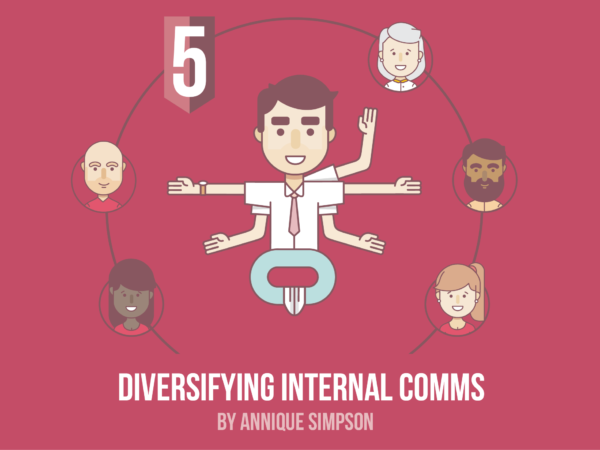
“What inspired me to become an internal communicator?”. Perhaps you’ve pondered this question yourself once or twice down the line. We invited IC connoisseur and Consultant Mike Klein to share his own thoughts with us – while also revealing his top tips for how internal communicators can amplify the impact of their internal comms projects.
One of the things that’s remarkable about all of the writing and posting that goes on in the internal comms world is that it focuses almost exclusively on two things: how internal communicators should do their jobs, and how they can justify their continued existence to the people who employ them.
Very little is written about why internal communicators choose this as a line of work as a profession, or for that matter, a calling.
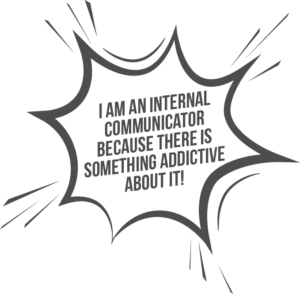
I’ve been an internal communicator since 1998, when I saw the field as an opportunity to combine my learnings from my MBA course at London Business School with those from my prior career as a political campaign consultant in the United States.
At the moment, a fair bit of my consulting work is external in focus, but I call myself an internal communicator less because of what I do and more because it’s who I am.
I am internal communicator because there is something addictive about it.
What makes internal comms addictive is the ability to see the impact of your work, live and in real time.
Why internal communicators should focus on impact
I share this with you because it is the twenty years that I have been both an internal comms leader – and addict –that have given me some insights into how to most effectively, and most efficiently, generate tangible impact.
A desire to have an impact as a communicator, and the willingness to create opportunities to do so, is actually an outlet for someone with a courageous streak.
There is a certain bravery in wanting to make change, in wanting to be “the one” who does “the something” that alters the flow of history, regardless of whether the change is minuscule or massive.
To a large extent, there are tangible things that internal communicators can do to project their impact, and in internal contexts, it is usually quite easy to see the outputs of these steps altering the flow or context of an organization in tangible ways.
My top 5 tips for internal communicators to help you maximize the impact of your internal comms
1. Ask the best questions
For me, the first step is to focus on asking the best questions.
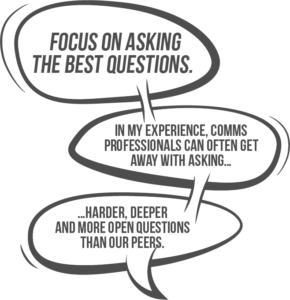
In my experience, internal communicators can often get away with asking harder, deeper and more open questions than our peers. This is certainly true in private settings, and can even be true in more public settings like town-hall sessions.
I have two particular “tricks” for asking questions that yield stronger and less predictable results.
The first is to ask for three answers to a question: “what are your three biggest challenges?,”; “what are your three biggest competitive pressures?”.
The second is to ask the same basic question from different angles: “what are your biggest challenges?”; “what are your most pressing challenges?”
In asking open questions that probe more widely and deeply, you open up possibilities of bringing fresher ideas and a sharper context to your conversation so it can move in more inspiring directions.
2. Generate and share insightful data
A second way internal communicators can have tangible impact is to generate and share insightful data – even if it isn’t perfect.
Measurement is something that senior leaders love, in part because injecting real numbers can accelerate understanding and speed up conversations. And by “measurement,” I don’t mean measuring eyeballs and hits.
I mean measuring changes in attitudes, and tracking the extent to which your stakeholders embrace or reject the language you use to describe the changes you want to see in your organizations, markets and communities.
3. Seize the power of the pen (or touchpad)
This leads us to a key and related concept, a third approach: “seizing the power of the pen (or the touchpad).”
As internal communicators, we are not secretaries. We don’t take dictation – we are authors who propose new ideas. We create new language and sharpen messages – and actions – as editors of outcomes as well as texts.
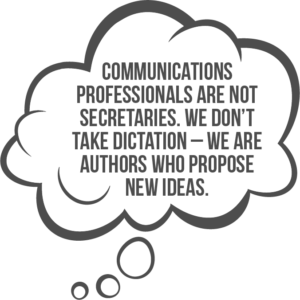
For those who write, my main piece of advice in this regard is to “draft ambitiously and gracefully accept editing”.
For those who edit, my request is to remember that you are not here to edit texts, but to edit the world into which those words are received.
Words have influence. And even in a world that prizes digital and visual brilliance and the certainty of numbers, it is words that are our currency, that gives the work of internal communicators its lasting impact.
Now, given that we work on behalf of organizations, knowing we have the power of the pen does little good unless it aligns with larger motives.
4. Be crystal clear on your organization’s goals and ambitions
This is why the fourth element, being clear on the organization’s goals and ambitions, is necessary to enable internal communicators to have the right kind of impact.
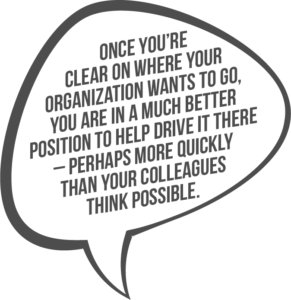
You can’t know if you are really in sync with your organization, unless you know what its ambitions are.
Once you are clear on where the organization wants to go, you are in a much better position to help drive it there – and perhaps to help it move more quickly than your peers and colleagues think possible.
When you make use of these opportunities, you will inevitably create some satisfied customers (even if you offend some other people).
5. Mobilize your satisfied customers
The fifth and final opportunity I will share today is for you to mobilize those satisfied customers.
These are the people who can testify to the impact that you deliver, and to the value that your interventions create for their organizations and for them individually.
They can also provide access to new networks and also function as sources for the case stories you will share about your work.
So, to wrap up, my five suggestions to help internal communicators create tangible internal comms impact are:
- Ask the best questions
- Generate and share insightful data
- Seize the power of the pen (or touchpad)
- Be crystal clear on your organization’s ambitions and objectives
- Mobilize your satisfied customers
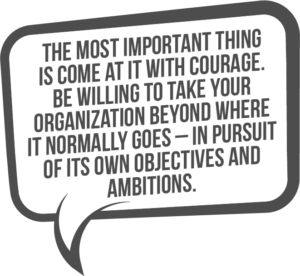
I am sure many of you are already doing these things. If you are, keep it up, and spread the word with your colleagues.
If you are seeking to have more impact, ask yourself what more you can do, what more you can learn, and who else you can join forces with.
The most important thing is come at this with courage. Be willing to take your organization beyond where it normally goes – in pursuit of its own objectives and ambitions. And be willing to be the one who takes the initiative.
“We are the ones we have been waiting for, we are the change we seek.” And for internal communicators, seeing that change unfold can be the biggest payoff of all.
Meet the author

Mike Klein
I am an internal communicator, writer and blogger and owner of Changing The Terms, a consultancy and blog based in Delft in the Netherlands. I am also Regional Chair of the International Association of Business Communicators (IABC) for Europe, Middle East and North Africa, and was a 2017 Contributor of the Year for IC Kollectif, the internal communications Center of Excellence.





